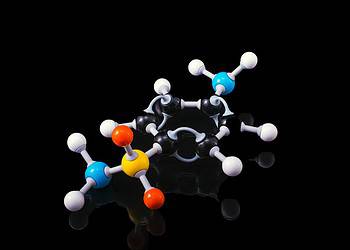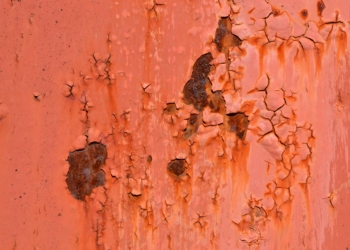
When you mix water with ouzo (a clear Greek spirit) something pretty crazy happens. The initially-transparent liquid turns a milky white almost instantly, a phenomenon known as the “ouzo effect.” This effect is more than just a party trick; it is a complex interplay of chemistry and physics. Now, researchers have developed a mathematical model for how it happens. And, in the process, they uncovered some useful applications for the model.
A sip of physics
Ouzo is one of those drinks you tend to either love or hate. It’s got a strong anise flavor and scent. Despite being a favorite in Greece and some nearby areas, it’s not to everyone’s liking. But you don’t need to like ouzo to be curious about this effect.
The ouzo effect happens when you add water to anise-flavored spirits such as ouzo, pastis, or sambuca. These drinks contain a mix of water, ethanol (alcohol), and anethole, an aromatic oil from anise that gives them a distinctive flavor. In the pure spirit, anethole is fully dissolved due to the high concentration of alcohol. However, when you add water, the alcohol’s ability to keep anethole in solution diminishes. This causes the anethole to precipitate, forming tiny droplets that scatter light, giving the drink its characteristic milky appearance.
“When water is added, microscopic droplets form that are made mostly of oil, and these are a result of the anise oil separating from the alcohol-water mixture. This causes the drink to turn cloudy as the droplets scatter light,” explains Dr. David Sibley, an expert in mathematical modeling.
The really strange thing is that this happens spontaneously.

To understand the ouzo effect, we need to take a detour to the concept of phase separation. In a typical mixture of water and oil, the two liquids separate into distinct layers due to their immiscibility. Creating an emulsion—a fine dispersion of one liquid within another—usually requires energy input, such as vigorous shaking or stirring. However, in the ouzo effect, emulsification occurs spontaneously, triggered solely by the addition of water.
“This emulsification — the suspension of well-mixed oil droplets in the liquid — is something that requires a lot of energy in other systems and foods. For example, food emulsions such as mayonnaise and salad dressings require vigorous whisking to achieve a smooth and stable mixture. For ouzo, however, the emulsification happens spontaneously,” Sibley continued.
“What’s also surprising is how long these droplets, and the resulting cloudiness, remain stable in the mixture without separating, especially when compared to other food emulsions. If you’ve ever made an olive oil and balsamic vinegar dressing, you’ll notice that the two liquids start to separate after a short time, requiring more whisking to bring them back together. The ouzo-water emulsion remains stable for a much longer period.”
What was cloudy is now clear
“Understanding how and why this happens in ouzo could lead to the development of new materials, especially in fields such as in pharmaceuticals, cosmetics, and food products, where the stability and distribution of microscopic particles are critical,” Sibley said
So, Sibley and colleagues wanted to pinpoint the mathematical principles that explain how these droplets that form the cloudy effect take shape and why they last so long. First, they mixed alcohol, oil, and water in varying proportions, observing the phase separation and measuring physical properties such as surface tension.
They found that as water is added to the mixture, the ethanol partitions preferentially with the water, reducing the solubility of anethole. This leads to the formation of an oil-rich phase that precipitates out as tiny droplets. With this data, they calculated a phase diagram, a graphical representation that shows the different states of a substance in various conditions. Essentially, they developed a mathematical model for how the ouzo effect takes place.
Another important aspect of the ouzo effect is the stability of the resulting emulsion. Once the oil droplets form, they do not immediately coalesce back into a separate oil layer as would be the case if you mix cooking oil and water. Instead, they remain dispersed in the water-alcohol mixture, giving the drink its milky appearance. This stability is partly due to the low interfacial tension between the oil droplets and the surrounding water-alcohol solution.
Interfacial tension is a measure of the energy required to increase the surface area between two phases—in this case, oil and water. Lower interfacial tension means that the droplets can remain suspended without merging. This increases the longevity of the emulsion.
The study measured the interfacial tension of the ouzo system for various alcohol concentrations. They found that it decreases as the alcohol concentration increases. Near the critical point, the interfacial tension approaches zero, indicating that the emulsion is highly stable.
“You could say, what looks cloudy is now clearer,” said Professor Andrew Archer, the first author of the journal paper.
More than a quirky study
Although the work looked at ouzo, which is rather inconsequential in the grand scheme of things, the findings extend way further. Spontaneous emulsification plays a role in industries ranging from food and beverages to pharmaceuticals and cosmetics. Emulsions are used in salad dressings, creams, and lotions. So, the ability to mix oil and water without adding external energy could save a lot of money and resources
Furthermore, the work also has implications for understanding how droplets persist in the air, which is especially relevant in atmospheric science and public health. For example, research into the dynamics of airborne droplets has become crucial in understanding the transmission of respiratory diseases, particularly in the context of the COVID-19 pandemic. The mathematical principles underlying the ouzo effect could help model the stability and behavior of aerosols in the air, providing insights into how long they remain suspended and under what conditions they settle.
As is often the case, ‘blue skies‘ fundamental research can reveal profound insights about everyday experiences — like serving and drinking ouzo — while also contributing valuable knowledge that extends well beyond the initial curiosity.
More information: Andrew J. Archer et al, Experimental and theoretical bulk phase diagram and interfacial tension of ouzo, Soft Matter (2024). DOI: 10.1039/D4SM00332B






